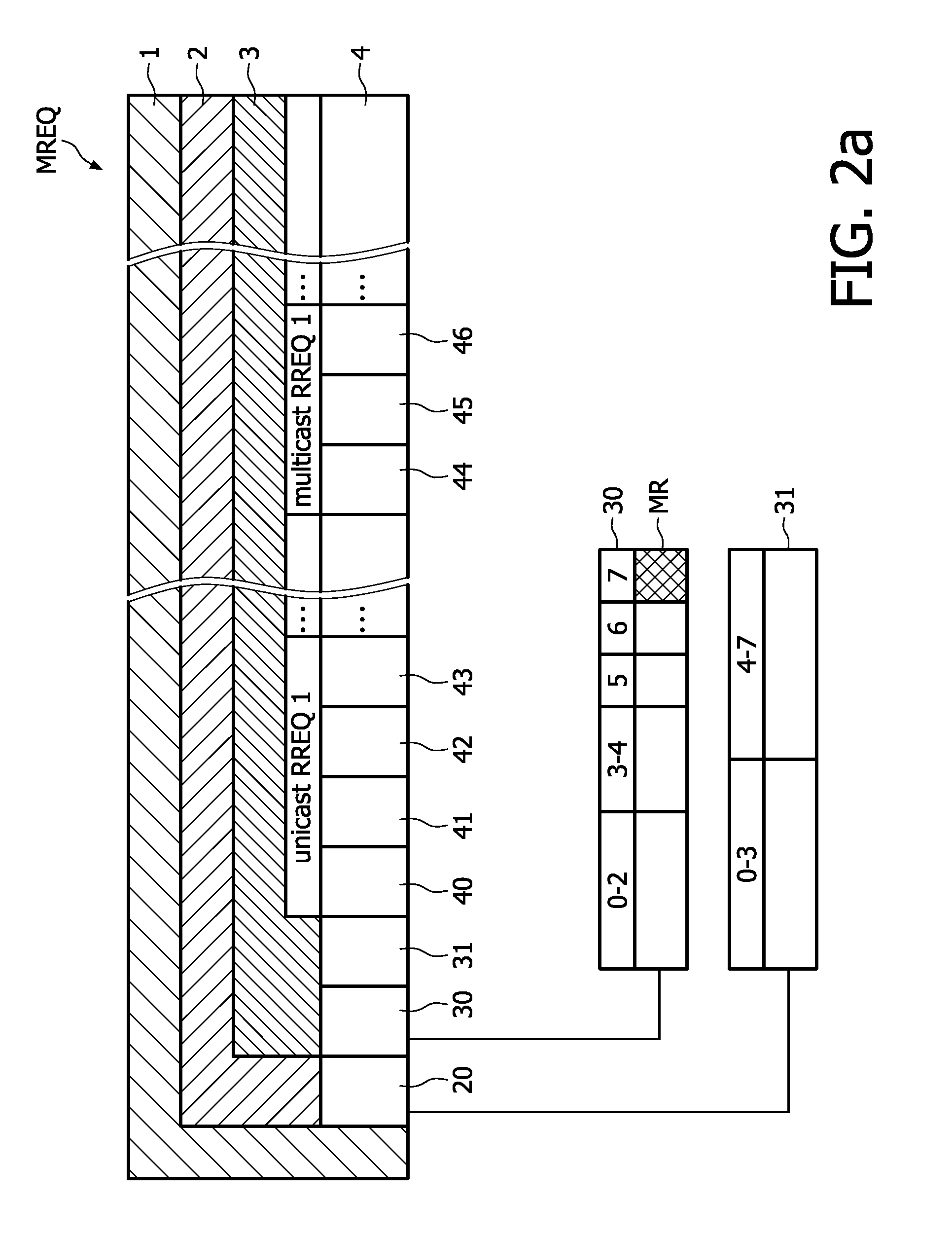Network interface unit for a node in a wireless multi-hop network, and a method of establishing a network path between nodes in a wireless multi-hop network
a network interface and wireless multi-hop technology, applied in wireless communication services, electrical equipment, wireless commuication services, etc., can solve the problems of affecting the reliability of the network, affecting the network, and affecting the network, so as to reduce the likelihood of network flooding again because of collisions leading to failed route requests, and reduce the probability of repeat route requests. the effect of energy consumption
- Summary
- Abstract
- Description
- Claims
- Application Information
AI Technical Summary
Benefits of technology
Problems solved by technology
Method used
Image
Examples
Embodiment Construction
[0045]The graph of FIG. 1 shows the propagation of a route request (RREQ) message in a prior art network comprising 630 ZR nodes; each ‘+’ indicates a RREQ message broadcasted by a node. The vertical axis indicates the time elapsed between the initial RREQ message issued by the source node and the sending of a RREQ message by a particular node, while the horizontal axis indicates the distance of the particular node from the source node in meters. As the graph shows, broadcast storm increases in intensity until the last nodes, furthest away from the source node, have forwarded the RREQ message. Until these nodes are reached, 3.5 seconds have elapsed. In this time, the network is so flooded by the RREQ message, that other application messages, or even route reply messages for this RREQ, may fail to get through.
[0046]FIG. 2a schematically shows the structure of a Multiple Route Request network command MREQ according to a first embodiment of the invention. As mentioned in the introducti...
PUM
 Login to View More
Login to View More Abstract
Description
Claims
Application Information
 Login to View More
Login to View More - R&D
- Intellectual Property
- Life Sciences
- Materials
- Tech Scout
- Unparalleled Data Quality
- Higher Quality Content
- 60% Fewer Hallucinations
Browse by: Latest US Patents, China's latest patents, Technical Efficacy Thesaurus, Application Domain, Technology Topic, Popular Technical Reports.
© 2025 PatSnap. All rights reserved.Legal|Privacy policy|Modern Slavery Act Transparency Statement|Sitemap|About US| Contact US: help@patsnap.com



